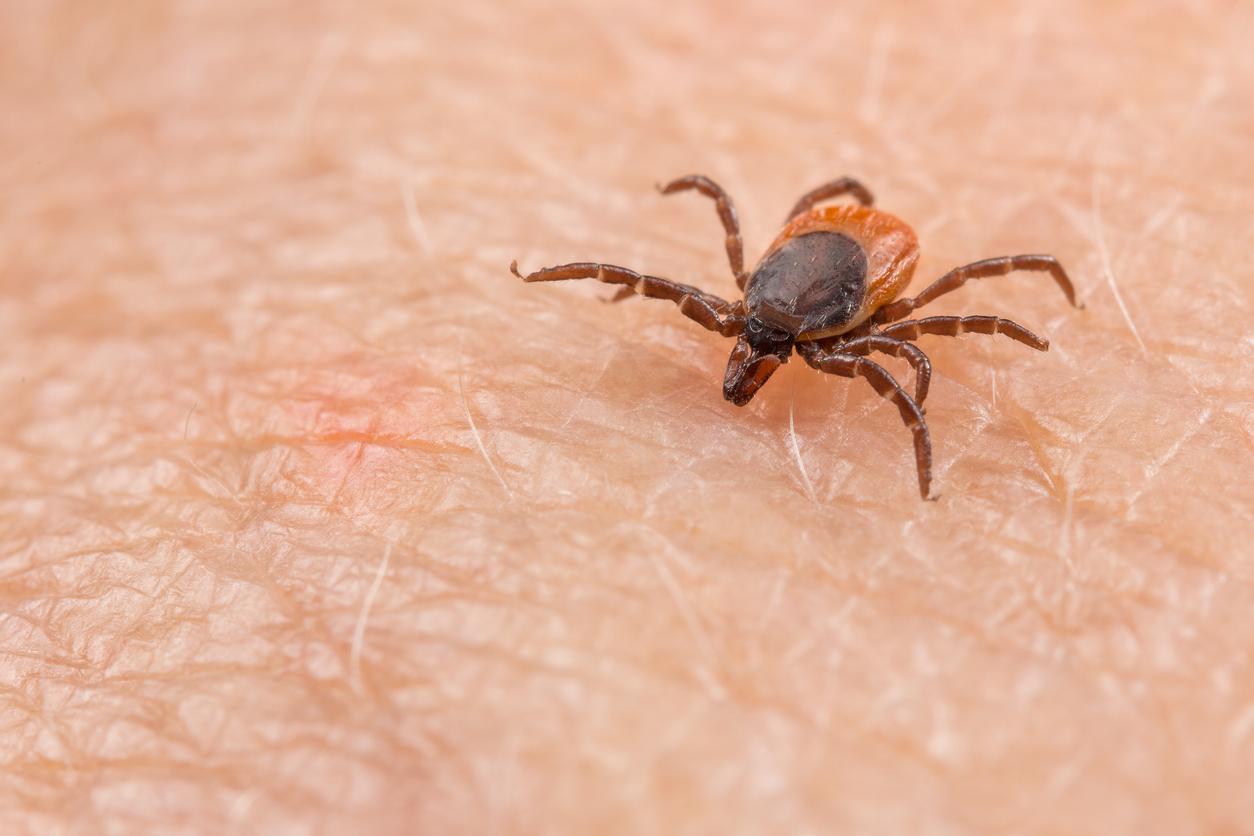With the fine weather, ticks, the first vectors of transmission of Lyme borreliosis, a serious infectious disease that affects the nervous system, are back and particularly active in certain areas.

- Wet, wooded areas, tall prairie grasses, gardens, and forest or urban parks are conducive to tick bites
- Since 2017, more than 18,000 reports of tick bites have been recorded in France
Be careful if you take advantage of the good weather in nature! Widespread throughout France, ticks are particularly active in hot weather – from spring to autumn. If there are recommendations (covering your arms and legs with long clothes and inspecting your body in particular), there are places where vigilance is particularly required. Indeed, ticks live in wooded and humid areas, tall prairie grasses, gardens and forest or urban parks… so many places where precautions should be taken.
Risky places
Regarding places at risk: 48% of people who reported a bite were bitten in the forest. Thus, it is best to stay on the trails and avoid tall grass. In the same way, they multiply in wet areas such as lakes, ponds and ponds… water points are therefore areas where it is recommended to cover yourself well.
Then come the meadows: with their tall, dense grass, they are conducive to ticks that love to cling to livestock or rodents before landing on us. Finally, ticks are very present in parks and gardens: 29% of people who have been bitten say they have been bitten in a green space in an urban area.
A recent study showed that ticks also like beaches since they settle in coastal grasses and bushes.
Serious infectious disease
As indicated the Ministry of Health, Lyme disease, or Lyme borreliosis, is transmitted through the bite of a tick infected with bacteria from the spirochete family. It’s a serious infectious disease that affects the nervous system and which is often without symptoms but can in some cases lead to a sometimes debilitating disease (lasting joint pain, partial paralysis of the limbs, etc.). Lyme disease is not contagious.
Extract the tick
After a tick bite, it is important to extract the tick(s) as soon as possible with a tick remover sold in pharmacies. Indeed, if the tick carries the Borrelia bacterium, the risk of transmission of this bacterium, responsible for Lyme disease, increases with the duration of the tick’s attachment to the skin.
After a walk, remember to inspect your whole body as quickly as possible. The examination must be meticulous because the ticks are small (1 to 3 mm). Take a good look at the whole body and especially the areas where the skin is thin because tick bites are more frequent there and sometimes more difficult to see, such as the armpits, the folds of the knee, the genitals, the navel, the auditory canals, neck, scalp…
Red and rounded plate
In the 30 days following a bite, an erythema migrans may appear in the form of a red, rounded plaque, which extends in a circle around the bitten area and then disappears in a few weeks to a few months. The evolution is very favorable when the disease is diagnosed and treated early. A two-week course of antibiotics is recommended. In the absence of treatment, joint, neurological or skin disorders may occur.















